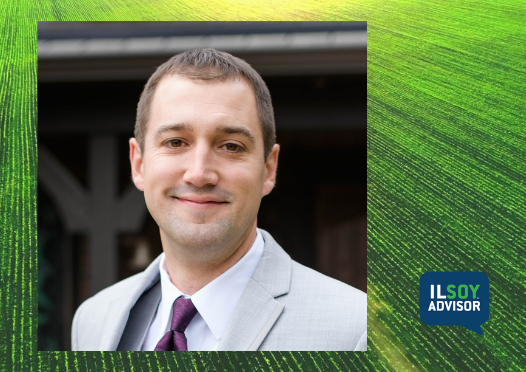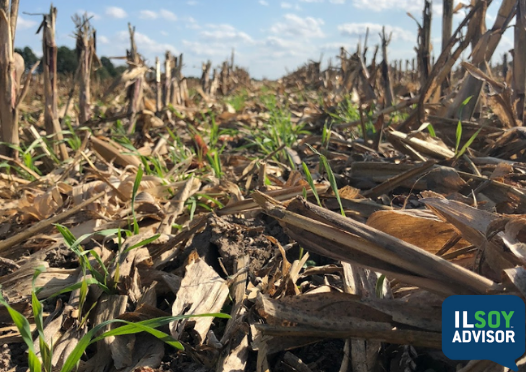ILSOYADVISOR POST
Protecting the Watershed: Is Collaboration the Key to a Sustainable Future?
Investments in sustainable initiatives are becoming mainstream since long term resilience is a priority for the marketplace. Leaders not only have to focus on day-to-day operations, but also devise and monitor ways to protect critical resources. In agriculture, producers and consumers are moving towards a common goal of water, soil, and yield stewardship. Fortunately, new sustainability strategies and technologies appear in the market daily. However, in order to implement them appropriately, producers must join forces to evaluate options, optimize costs, and execute without hassle.
Since water and land are interconnected, and have no sense of man-made property lines, the greatest opportunity to improve efficiency and productivity comes from collaborating within the watershed. For any individual or sole entity thinking of CAPEX improvements, you lose tremendous pricing, impact, and yield benefits by doing it alone. By bringing ag-focused neighbors together for enhancements across the watershed, producers amplify savings, stewardship, and productivity.
Can farms be drained individually?
Draining individual farms may seem like an obvious choice, but there are enormous risks associated with this approach. First, the sheer magnitude of the massive undertaking that drainage management entails is often over-simplified. Second, the cost-share opportunities with neighbors and jurisdictions are missed. Third, the whole process ends up being much more time consuming. For instance, the first steps that should be taken in any drainage project include meeting districts, local watershed stakeholders, and other parties to discuss regulations, goals, land and water attributes – all of which are no small task and often overwhelm the inexperienced. Without knowing how to navigate these necessities such as details about neighbors’ water flows - a project can have disastrous financial and strategic outcomes. This scenario ends up costing even more in the long run and threatens individual producers’ output (let alone their sanity).
A communal task
To maximize the advantages of drainage water management and land improvement projects, it is essential to plan with the future objectives of the entire watershed. Relationships with neighbors are critical. In our experience, there are frequent circumstances where neighbors can have a huge impact on the future of the entire watershed. For instance, if the drainage district wants to make further developments this could impact the entire watershed’s long-term plan. Examples of other considerations include deciding on adequately sized mains, lateral spacing, or quality ditches/outlets. These elements all may have an impact on surface solutions by controlling erosion. In addition to the technicalities, working with neighbors towards a common goal helps build rapport and long-lasting relationships for hard-working rural American families. Neglecting to discuss these issues with multiple parties can lead to future financial loss and can be a huge roadblock on the path to land conservation.
The consequences of going it alone
Over the years experts have seen the that working independently can lead to inefficient drainage outcomes. The cost of improper drainage means soil erosion, ineffective use of inputs, and overall loss of production. Land is affected by inefficient drainage through loss of precious topsoil, compaction, and overall nutrient loss. That’s why holistic land and water management is needed like never before. Objective advice, innovative solutions, and third-party perspective managing the collaborators as a whole prevents these negative consequences from happening.
A sustainable way forward, together
The complexities and relationships within a watershed should be handled by professional consultants who can conduct full scale watershed assessments – and have the demonstrated experience, best practices, and programs to make the process easy. Professional consultants can maximize land and water management investments by offering analysis, innovative solutions, and holistic services. They also serve as the lead in guiding producers towards an ideal outcome that benefits everyone’s productivity and long-term resilience.
Working collaboratively is a wise agricultural and business decision that improves conservation outcomes. Holistic drainage management is an effective way to accelerate growth, reduce long term costs, help neighbors and increase productivity. Resources are best managed on a watershed basis - and the entire watershed is best managed by professionals. It’s the way of the future and how we will best protect our agricultural way of life, lands, and waters.
With roots dating back to 1932, KCoe Isom is a top 100 accounting firm and the nation’s leading food and agriculture consulting firm. Its specialists deliver increased value and growth for producers – from policy to plate – with comprehensive strategies and advisory in the areas of financial management, sustainability, farm programs, water and land management strategies, renewable energy and land conservation, and legacy planning. www.kcoe.com




Comments
Add new comment